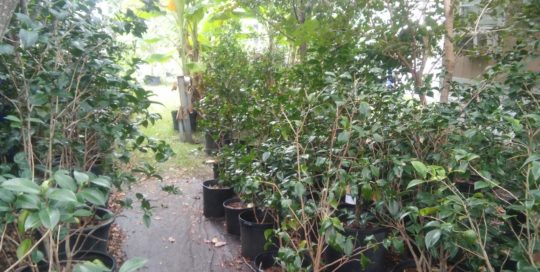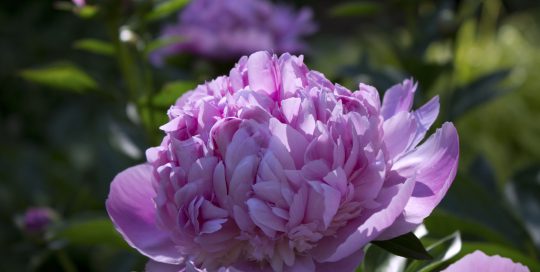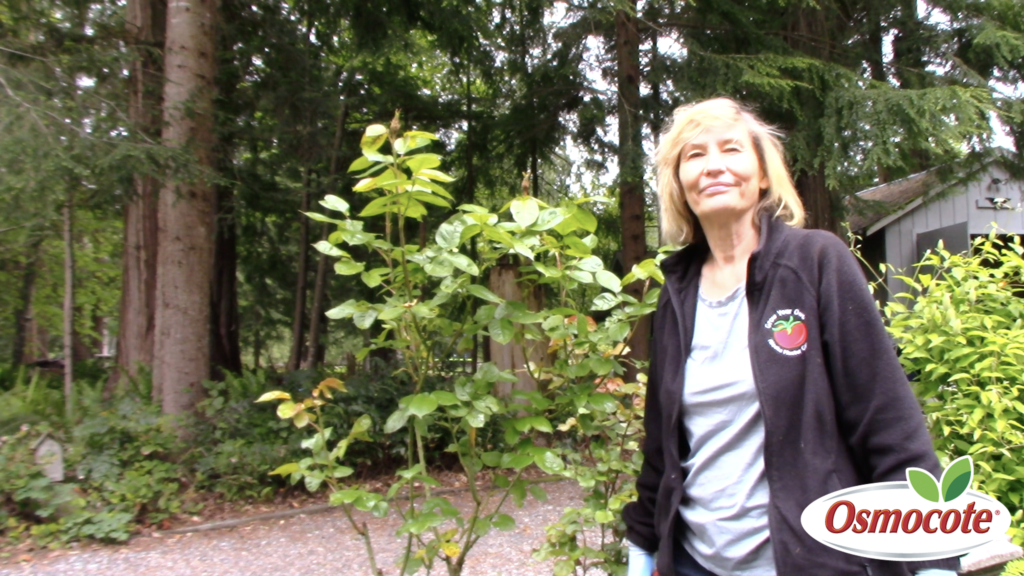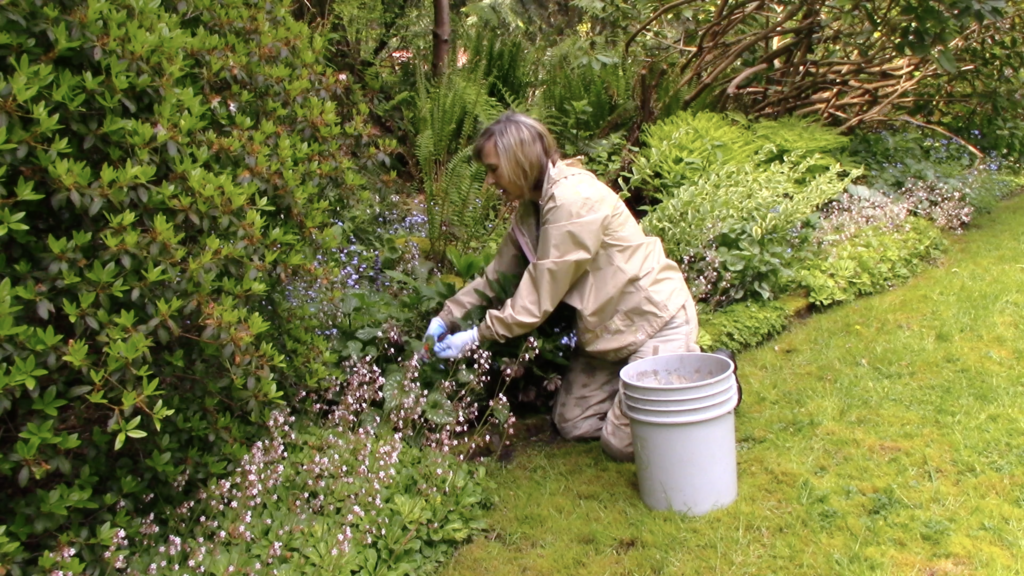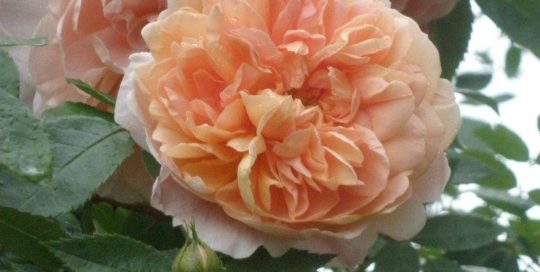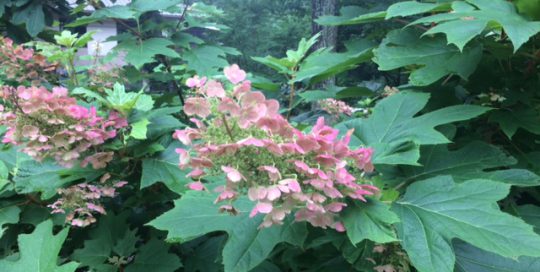-
Soak the root ball before planting – but don’t plant too deep
A few hours or the night before you add a rhododendron or azalea to your garden soak the entire root ball in water. Once you remove the container you can slice into the dense root ball few inches deep or score it with a trowel or knife to loosen up some of the fibrous roots. The planting hole should be twice as wide as the root ball with plenty of organic matter (compost, wood chips or sphagnum peat moss) worked into the soil. Set the top of the root ball about a 1/4 of an inch above the soil level. Planting too deep will suffocate the plant when growing rhododendrons. The mulch layer goes on top of this.
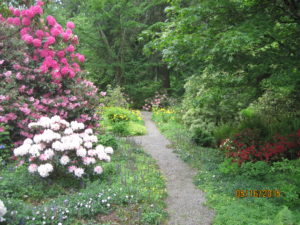
-
Summer Care means water, water, water – especially that first year as roots develop
The compact roots must be kept moist all year as these woodland shrubs lack a deep tap root. This is especially important every summer when next year’s blooms are formed. Use a drip system or patiently hand water to really soak the entire root ball. Adding organic matter when you plant and mulching on top of the soil will help to trap moisture but there is another tip you can use to indicate when to water in the summer: plant shade loving impatiens or lobelia under your rhododendrons. These thirsty annuals can act like canaries in a coal mine by wilting early to alert you when soil in the area is drying out.
-
Chose the right rhododendron for your area – but try new varieties
In warmer climates, azaleas do better than rhododendrons. Some varieties have repeat blooms in the fall, adding months to the flowering season. Many species of rhododendron are native to the United States. Finding out what grows best in your area can be as easy as noticing what is blooming beautifully in your neighborhood. You can snap a photo of a rhododendron in bloom to bring to a local nursery to find out the name of any variety you admire. Your local nursery will sell the varieties that do best in your climate including those species native to the region.
-
Know the mature size – but understand pruning
Rhododendrons and azaleas can be perfectly happy if you never prune them, or just prune to shape by occasionally removing wayward branches and dead wood. Large leaved varieties tend to grow the tallest, so give them room away from the house as they can grow to 15 feet. The more compact varieties such as the Yaks with small leaves are best for small gardens or as foundation plantings. For the most flowers practice pruning after blooming.
New growth sprouts from the point where any pruning cut is made. For growing rhododendrons, you can also snap off any faded flower clusters to tidy the shrub and keep energy from going to seed production. Drastic renovation of a mature rhododendron can be accomplished by pruning back to a stump – but then it can take up to three years for the patient to recover from the amputation. Better to remove one third of an overgrown rhododendron each year for three years. Azaleas can be sheared or trimmed immediately after they flower especially if you want a denser, hedge-like appearance. Japanese style pruning of azaleas is done after flowering by hand clipping to create globular cloud shaped shrubs.
-
Fertilize only when needed – but not too much.
Rhododendrons growing in the wild never need fertilizing so if you give these native shrubs soil with plenty of – you guessed it, organic matter they can thrive with no additional fertilizing on your part. The reality is that some soils are so thin that a spring application of a slow release plant food like Osmocote can provide the missing micro nutrients that rhododendrons and azaleas need for optimum growth. Rhododendrons with yellow leaves and green veins are suffering from a lack of iron so iron chelates will work like magic to green up the plants. Do not sprinkle any fertilizer near the trunk but instead apply at the drip line or where the branches end. Use a bit less not more than the amount recommended on the package.
Remember that growing rhododendrons and azaleas can be tricky with their sensitive fibrous roots. These roots not only dry out quickly, but can be easily burned from too much plant food. Cultivating near the roots of rhododendrons can also damage the roots so don’t work fertilizer into the soil with a fork, water it well instead.
Summary for Growing Happy Rhododendrons:
Lots of summer water, shade from the hot sun, protection from cold and drying winds and above all soil that is high in organic matter is what your rhododendrons need. Oh, and don’t forget to mulch!

